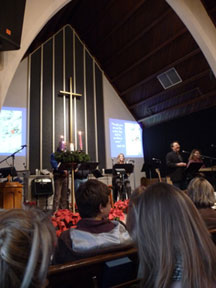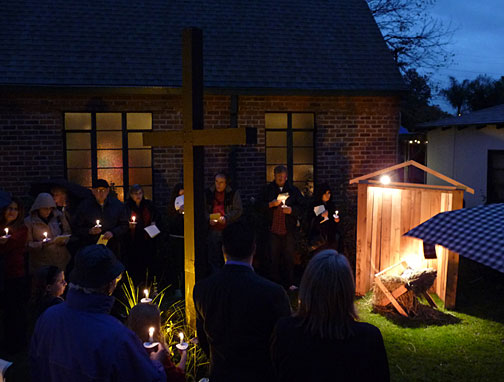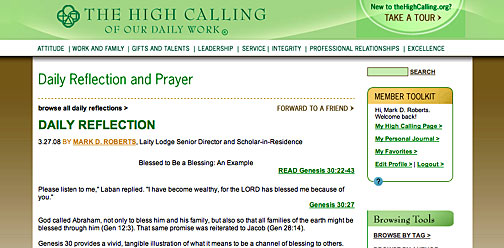 This year my family and I joined a Christmas Eve worship service at Westminster Presbyterian Church in Burbank, California. My sister-in-law and her family are part of this church, so we joined them on Christmas Eve.
This year my family and I joined a Christmas Eve worship service at Westminster Presbyterian Church in Burbank, California. My sister-in-law and her family are part of this church, so we joined them on Christmas Eve.
The service was quite fine. We sang several beloved Christmas carols, including: “Hark the Herald Angels Sing” and “Away in a Manger.” A bass soloist sang a moving version of “O Holy Night.” The church took up a special offering for a ministry that cares for poor children in Tijuana, Mexico. The pastor’s sermon was right on, hitting the core of the good news of Christmas. We shared communion together, and then finished by singing “Silent Night” outside while holding candles. All in all, it was a blessed time.
I say this is inevitable because I’ve experienced this sort of commotion in Christmas Eve worship for years and years. When I was Senior Pastor of Irvine Presbyterian Church, we had two early services on Christmas Eve that were especially for families with young children. You can imagine what happens if you jam a few hundred excited children into an enclosed space for an hour. Pandemonium! I never had to work harder to keep people’s attention during a sermon than when I gave my short Christmas Eve meditation in those services. But ever our later service at 6:30 usually had enough children present to create a Muzak of youthful din. Only our 11:00 p.m. candlelight communion service was usually free of such noise.
I know some churches that, in an effort to provide a quiet atmosphere for adult worship, try to keep parents from bringing their young children into Christmas Eve services. But, given the desire of families to worship together on the holiday, this approach rarely works. It can even cause hurt feelings and a sense of unfriendliness.
And, in my opinion, it’s not in keeping with the theological reality of Christmas. That’s why I say the pandemonium in Christmas Eve worship is ironic. Remember what we’re celebrating: the birth of a baby, a baby who no doubt made plenty of noise. Yes, I know we love “Silent Night” and sing of the little Lord Jesus “no crying he makes,” but the reality was much more ordinary. Because newborns sleep a lot, there were times of silence and “no crying” in the stable where Jesus was born. But, as one who was fully human even as he was fully God, Jesus surely made plenty of infantile racket.
I try to remember this as I’m being disturbed by children’s noises in Christmas Eve worship. Jesus didn’t come to earth as some sort of miracle child who never cried. He was really and truly human. He came into our existence to experience life as we experience it, crying, laughing, shrieking and all. Thus, though a part of me would rather enjoy Christmas Eve worship in mature silence, I’m strangely glad for the inevitable, ironic pandemonium that comes from real children doing what real children do.
Next time you’re in a Christmas service, or any worship service for that matter, and a child’s noise bothers you, remember the baby Jesus. Celebrate the wonder of God becoming fully human in Jesus. Because Jesus started life as a fully human little noisemaker, he was able to represent the rest of us noisemakers on the cross.

Photo: The conclusion of Christmas Eve worship at Westminster Presbyterian Church in Burbank, California. It’s all there: the manger and the cross, with candlelight and “Silent Night.”

